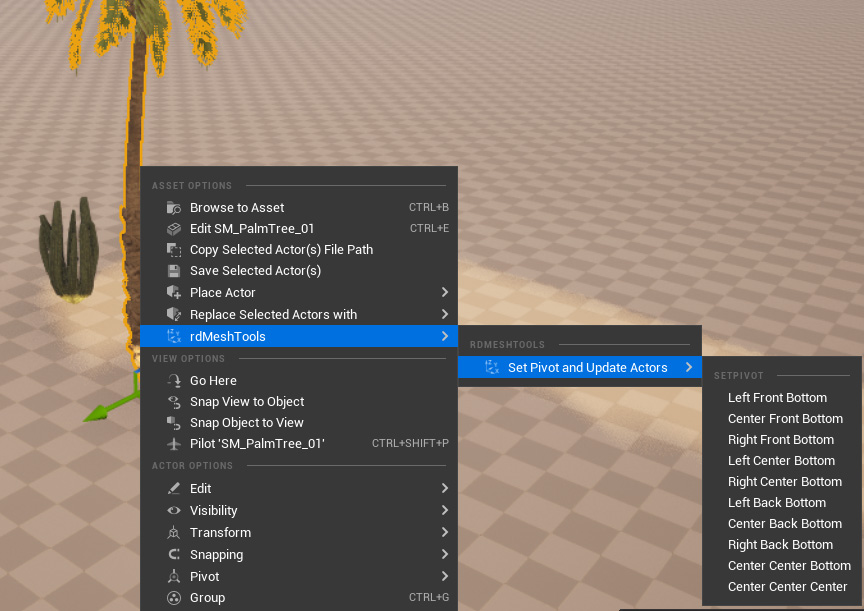Section 2.2: The World Context Menu and Outliner Menu
When you have Static Mesh actors selected in your level and you Right-Click – a Context menu item is added by rdMeshTools with a submenu of pivot locations.
This changes the pivot points of the Static Meshes used by the selected actors in the same way as Section 2.1 did, but it also Updates all the Actors positions to correct for the change in pivot locations.
